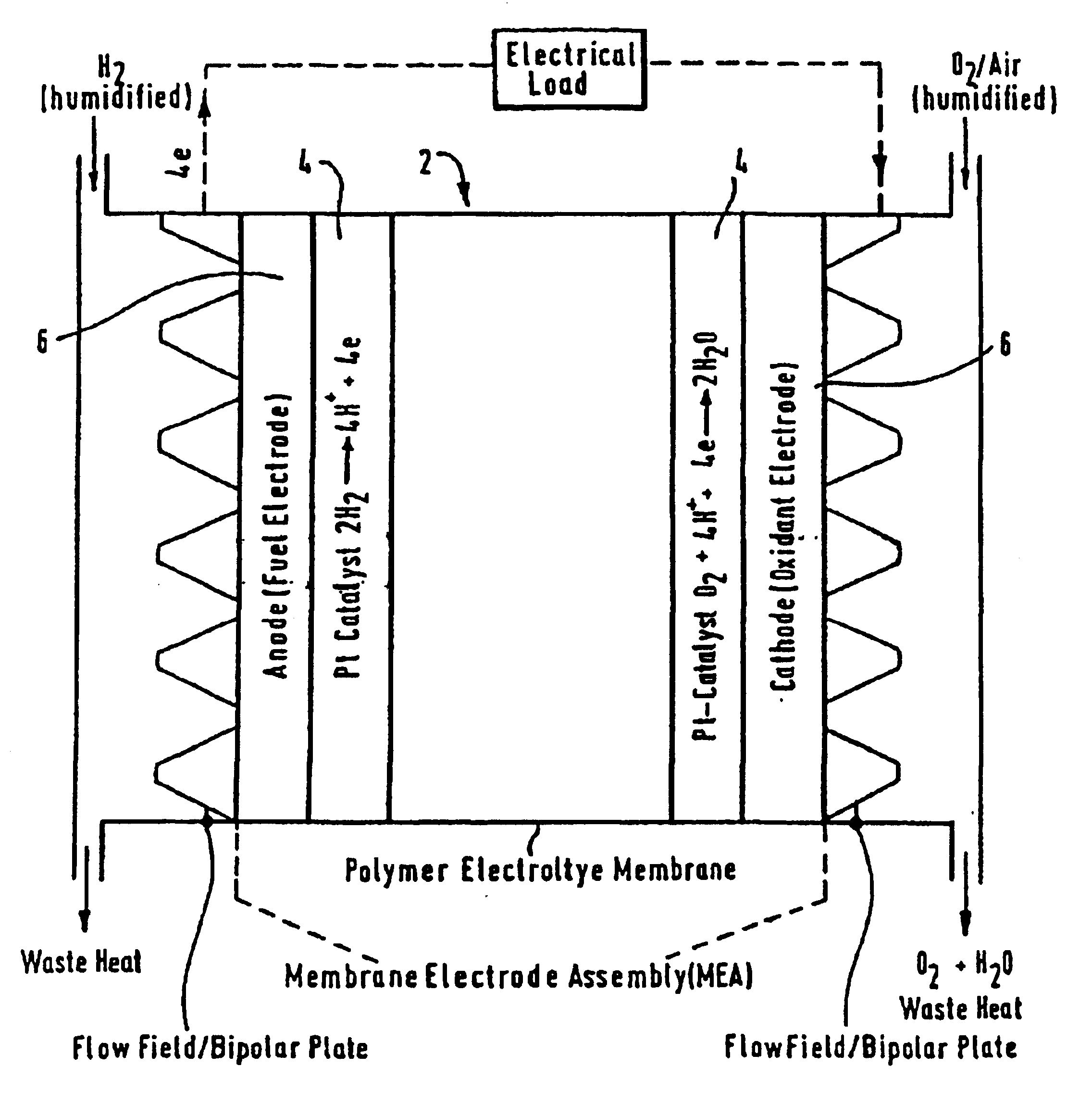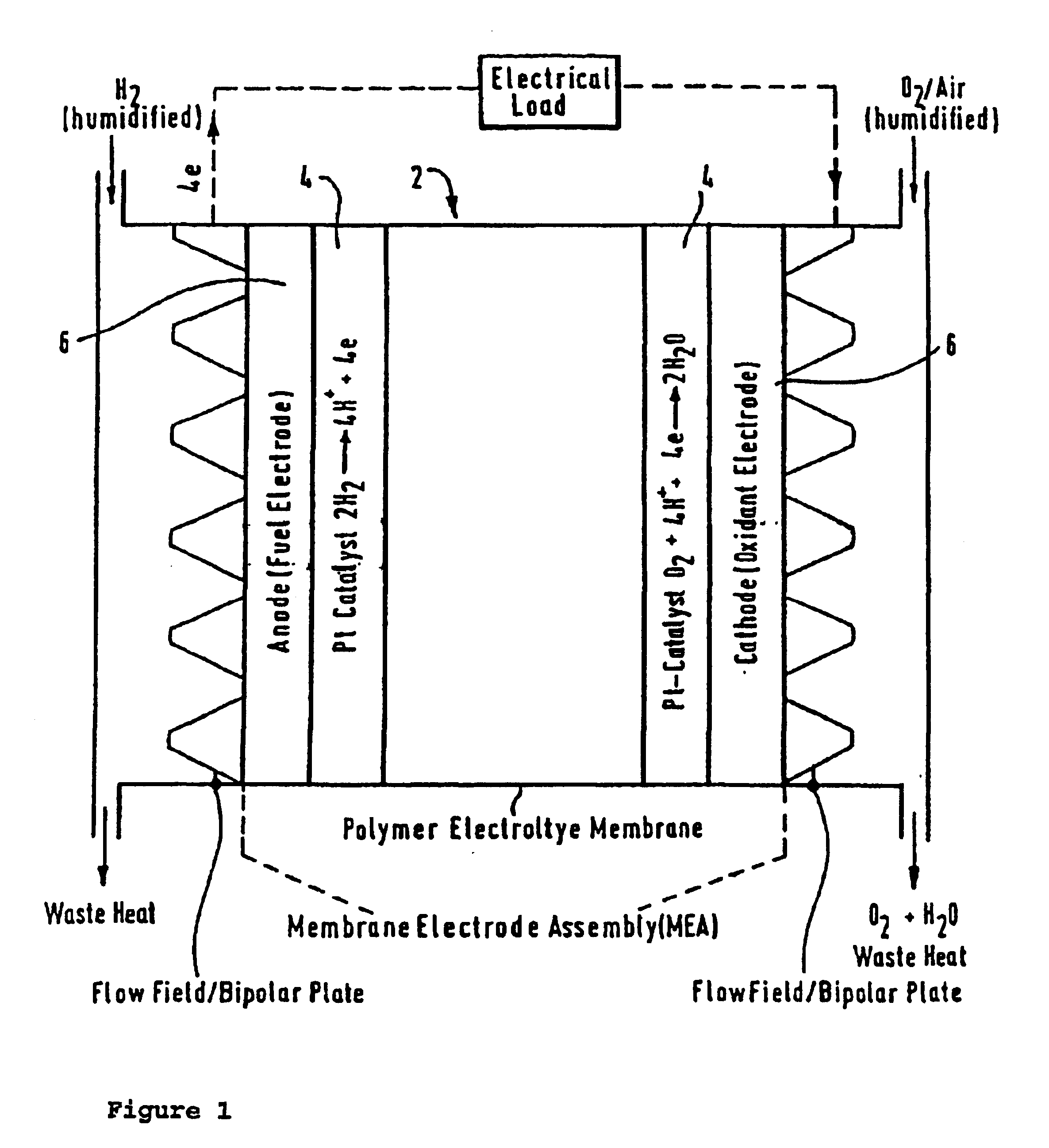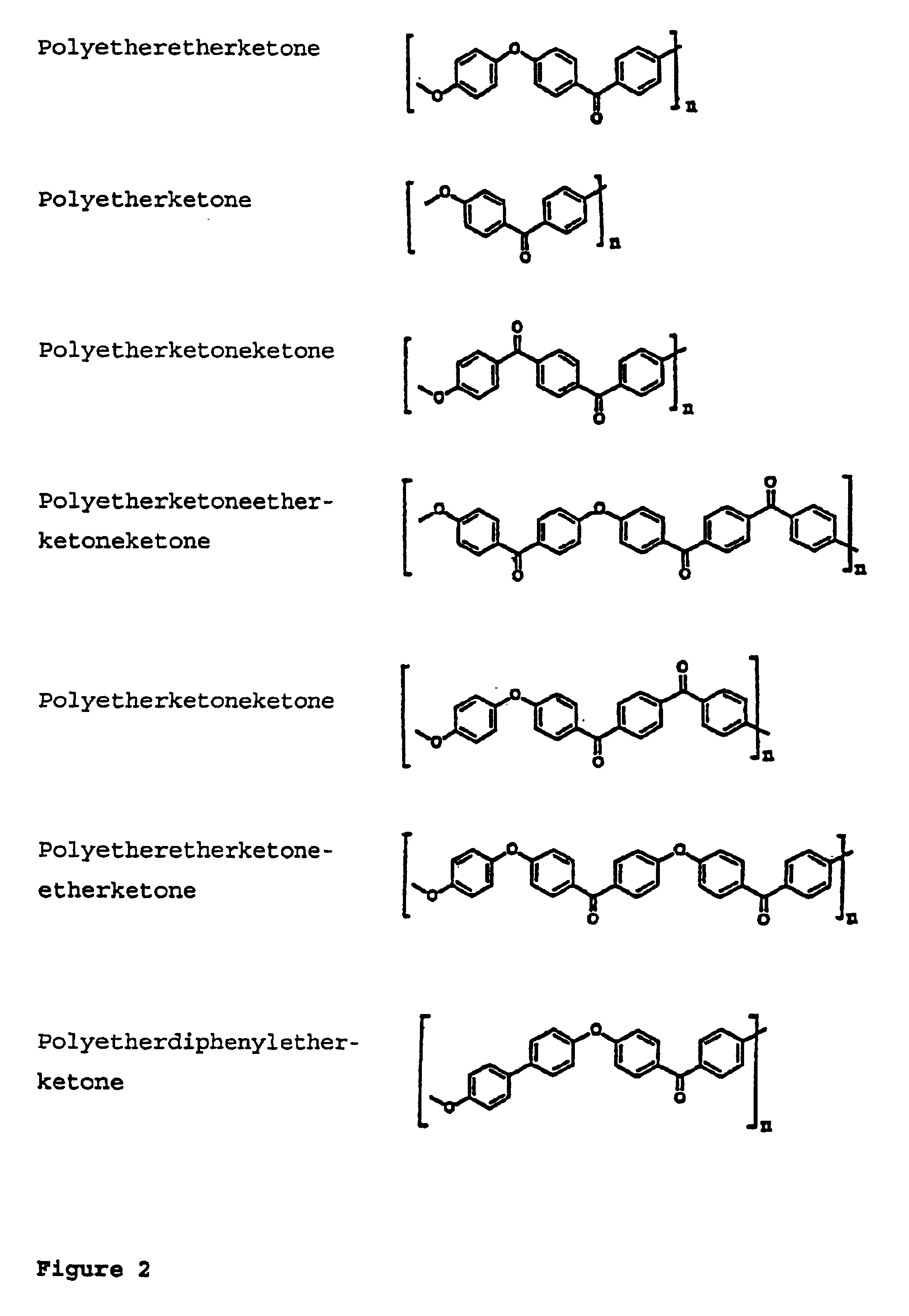Composite ion exchange material
a technology of composite ion and ion exchange, applied in the field of composite ion exchange materials, can solve the problem that the mechanical properties of the single layer of the material are not satisfactory, and achieve the effect of easy sulphonate and difficult sulphona
- Summary
- Abstract
- Description
- Claims
- Application Information
AI Technical Summary
Benefits of technology
Problems solved by technology
Method used
Image
Examples
example 1
[0153]A 700 ml flanged flask fitted with a ground glass Quickfit lid, stirrer / stirrer guide, nitrogen inlet and outlet was charged with 4,4′-difluorobenzophenone (89.03 g, 0.408 mole), 4,4′-dihydroxybiphenyl (24.58 g, 0.132 mole) 4,4′-dihydroxybenzophenone (57.41 g, 0.268 mole), and diphenysulphone (332 g) and purged with nitrogen for over 1 hour. The contents were then heated under a nitrogen blanket to between 140 and 150° C. to form an almost colourless solution. While maintaining a nitrogen blanket, dried sodium carbonate (43.24 g, 0.408 mole) was added. The temperature was raised gradually to 315° C. over 2 hours then maintained for 1 hours.
[0154]The reaction mixture was allowed to cool, milled and washed with acetone and water. The resulting polymer was dried in an air oven at 120° C. The polymer had a melt viscosity at 400° C., 1000 sec−1 of 0.54 kNsm−2.
example 2
[0155]A 700 ml flanged flask fitted with a ground glass Quickfit lid, stirrer / stirrer guide, nitrogen inlet and outlet was charged with 4,4′-difluorobenzophenone (89.03 g, 0.408 mole), 4,4′-dihydroxybiphenyl (18.62 g, 0.10 mole) 4,4′-dihydroxybenzophenone (64.26 g, 0.30 mole), and diphenysulphone (332 g) and purged with nitrogen for over 1 hour. The contents were then heated under a nitrogen blanket to between 140 and 150° C. to form an almost colourless solution. While maintaining a nitrogen blanket, dried sodium carbonate (43.24 g, 0.408 mole) was added. The temperature was raised gradually to 315° C. over 2 hours then maintained for 1 hours.
[0156]The reaction mixture was allowed to cool, milled and washed with acetone and water. The resulting polymer was dried in an air oven at 120° C. The polymer had a melt viscosity at 400° C., 1000 sec−1 of 0.43 kNsm−2.
example 3
[0157]A 700 ml flanged flask fitted with a ground glass Quickfit lid, stirrer / stirrer guide, nitrogen inlet and outlet was charged with 4,4′-difluorobenzophenone (89.03 g, 0.408 mole), hydoquinone (25.17 g, 0.229 mole) 4,4′-dihydroxybenzophenone (36.72 g, 0.171 mole), and diphenysulphone (332 g) and purged with nitrogen for over 1 hour. The contents were then heated under a nitrogen blanket to between 140 and 150° C. to form an almost colourless solution. While maintaining a nitrogen blanket, dried sodium carbonate (42.44 g, 0.40 mole) and dried potassium carbonate (1.11 g, 0.008 mole) was added. The temperature was raised gradually to 315° C. over 2 hours then maintained for 1.5 hours.
[0158]The reaction mixture was allowed to cool, milled and washed with acetone and water. The resulting polymer was dried in an air oven at 120° C. The polymer had a melt viscosity at 400° C., 1000 sec−1 of 0.39 kNsm−2.
PUM
| Property | Measurement | Unit |
|---|---|---|
| Electric potential / voltage | aaaaa | aaaaa |
| Molar mass | aaaaa | aaaaa |
| Fraction | aaaaa | aaaaa |
Abstract
Description
Claims
Application Information
 Login to View More
Login to View More - R&D
- Intellectual Property
- Life Sciences
- Materials
- Tech Scout
- Unparalleled Data Quality
- Higher Quality Content
- 60% Fewer Hallucinations
Browse by: Latest US Patents, China's latest patents, Technical Efficacy Thesaurus, Application Domain, Technology Topic, Popular Technical Reports.
© 2025 PatSnap. All rights reserved.Legal|Privacy policy|Modern Slavery Act Transparency Statement|Sitemap|About US| Contact US: help@patsnap.com



